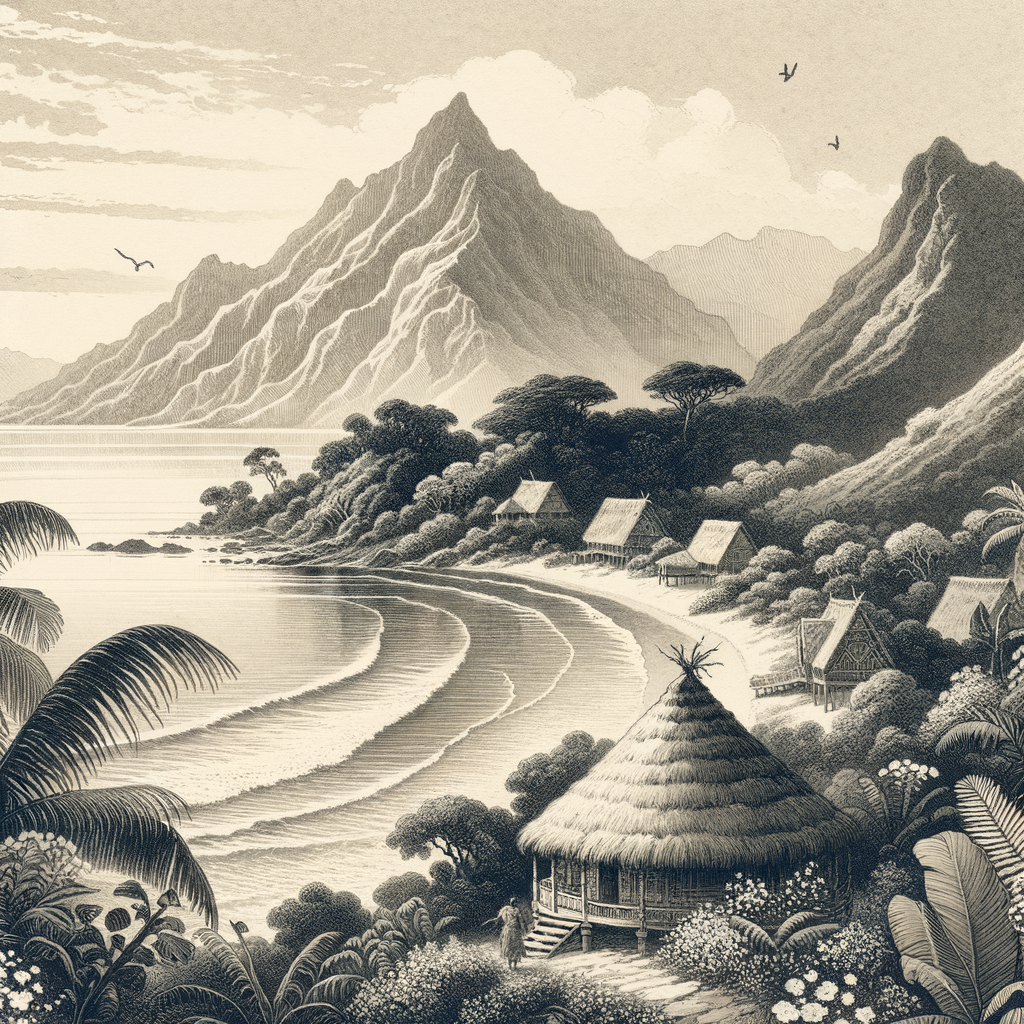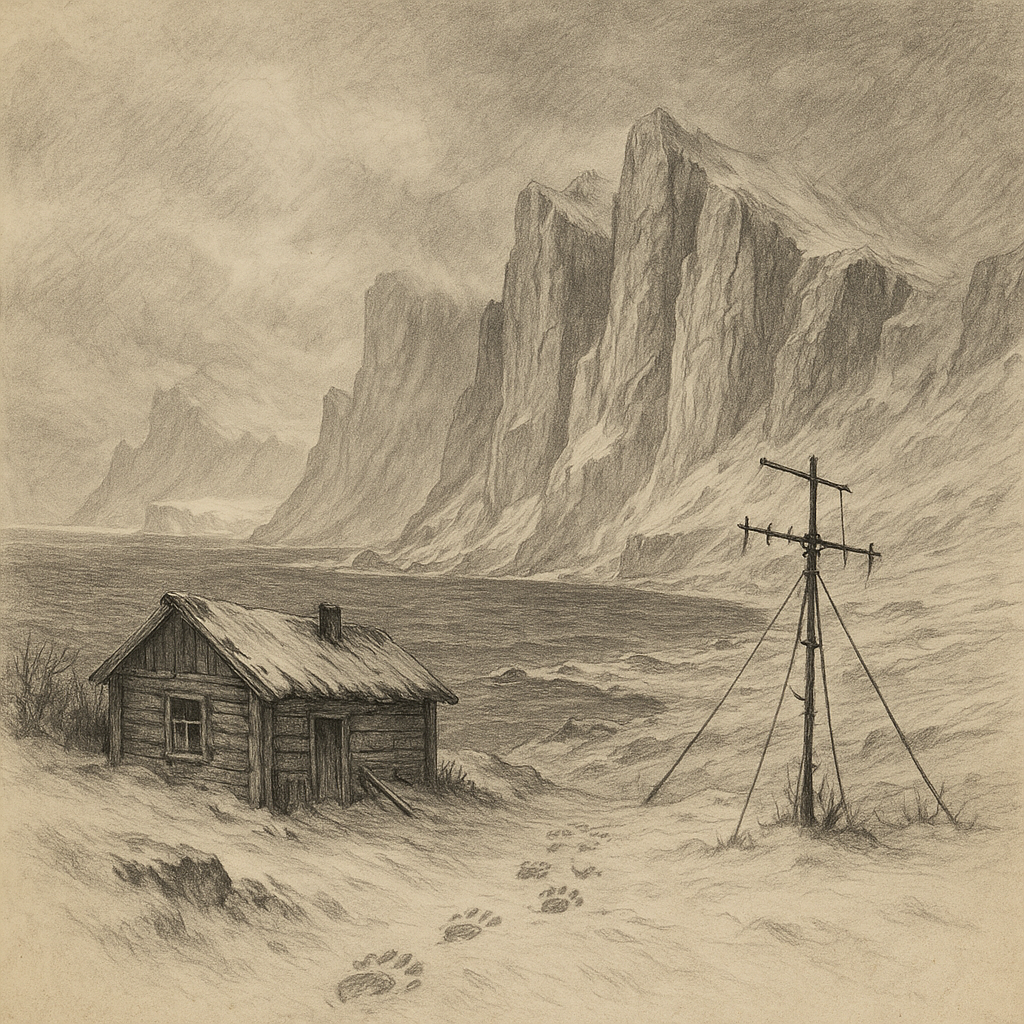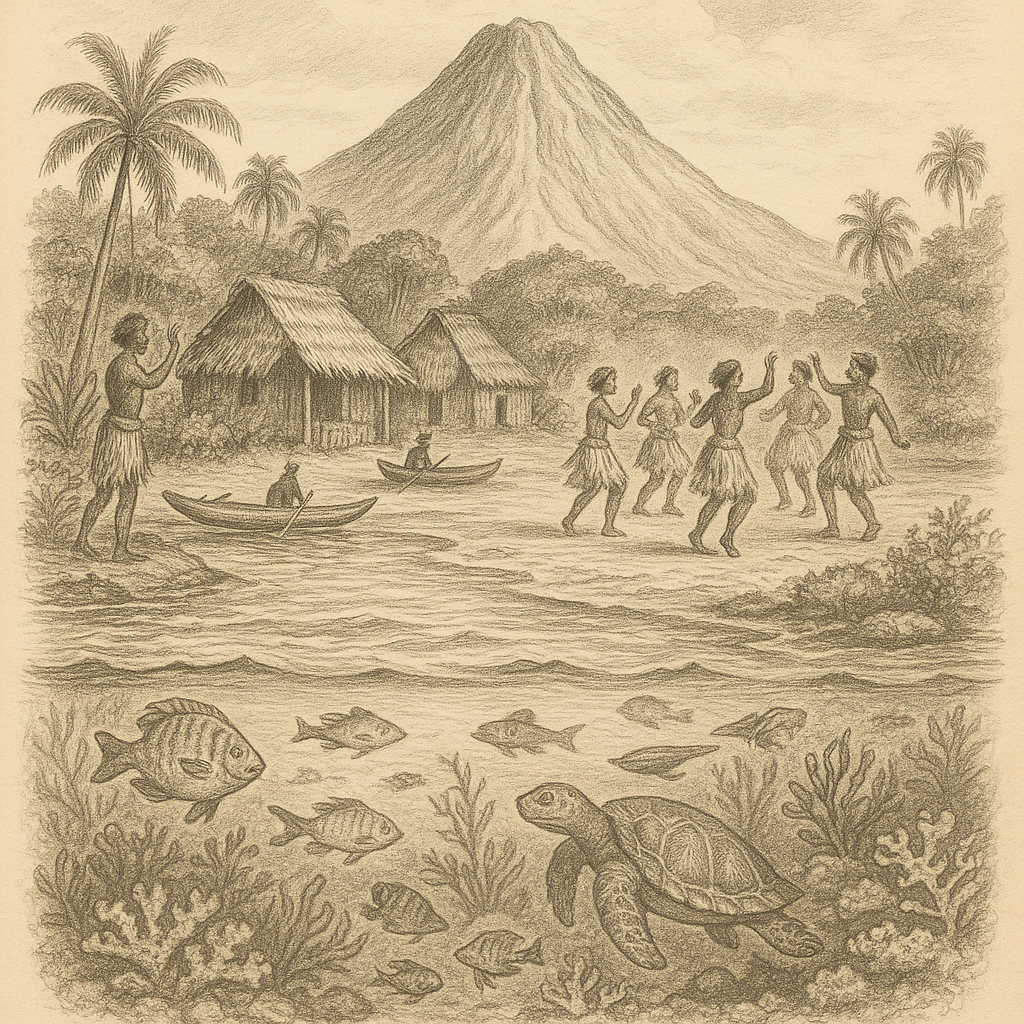Rapa Iti – A Remote Jewel of the South Pacific
Rapa Iti, also known simply as Rapa or Oparo, is a small, remote island located in the South Pacific Ocean. It lies in the Austral Islands, the southernmost group of islands in French Polynesia. The name “Rapa Iti” means “Little Rapa” to distinguish it from Easter Island, which was once called “Rapa Nui” or “Big Rapa” by ancient Polynesians. With its rugged geography, rich cultural legacy, and air of isolation, Rapa Iti remains one of the last unspoiled corners of Polynesia.
Location and Geography
Rapa Iti is situated roughly 1,240 kilometers south of Tahiti, making it one of the most southerly populated islands in French Polynesia. The island covers an area of approximately 40 square kilometers and is of volcanic origin. Its dramatic landscape is characterized by deep bays, steep forested hills, and sharp ridgelines. Mount Perau, the highest peak on the island, rises to 650 meters above sea level.
The coastline of Rapa Iti is rugged and deeply indented by fjord-like inlets, the most prominent of which is Haurei Bay, where the island’s main—and only—village is located. The unique geography of the island affords it natural protection but also contributes to its isolation, as access is limited almost entirely to sea routes, although an airstrip exists for emergency use.
Geological Origins and Climate
Like much of Polynesia, Rapa Iti was formed as part of a hotspot volcanic chain in the Pacific Plate. The island is the remnant of a shield volcano, created through successive eruptions that built up the landmass over millions of years. Today, erosion has carved out steep valleys and deep harbors, giving Rapa its breathtaking topography.
Rapa Iti experiences a humid subtropical climate, with cooler temperatures than the rest of French Polynesia due to its southern latitude. Average annual temperatures range from 18°C to 24°C, and the island receives around 2,500 mm of rainfall per year. The lush vegetation that results from this climate includes ferns, mosses, and endemic species found nowhere else in the world.
Flora, Fauna, and Marine Life
The biodiversity of Rapa Iti is remarkable, especially considering its size and remoteness. The island is home to several endemic plant and bird species, some of which are considered endangered due to habitat loss and the introduction of invasive species. Among the unique bird species is the Rapa fruit-dove (Ptilinopus huttoni), known for its vivid plumage and elusive behavior.
Surrounding coral reefs and underwater slopes offer a marine environment rich in biodiversity, including reef fish, sea turtles, and occasional sightings of dolphins and migrating whales. The surrounding waters are also part of occasional marine conservation efforts aimed at protecting this fragile ecosystem.
Society and Demographics
Rapa Iti has a small population of around 500 residents, most of whom live in the village of Haurei. The community is closely knit, with a strong emphasis on traditional Polynesian customs and sustainable living. Unlike many other islands in French Polynesia, Rapa has retained much of its indigenous culture and language.
The locals speak Rapan, a Polynesian language closely related to Maori and Marquesan, as well as French, the official administrative language of French Polynesia. Subsistence farming, fishing, and limited animal husbandry make up the core of the island’s economy. Transport and communication with the outside world remain limited, contributing to Rapa’s enduring sense of isolation.
Interesting Facts About Rapa Iti
– Rapa Iti is one of the few Polynesian islands where traditional stone fortresses, known as “pa,” can still be found. These defensive structures were built atop ridges and hills for protection during intertribal wars.
– The island has no airport for regular commercial flights. All goods and passengers arrive by ship, which connects the island with Tahiti once every few weeks.
– The island operates under traditional governance in parallel with French administrative structures. The Council of Elders plays an advisory role in local affairs and the preservation of cultural heritage.
– Due to the lack of light pollution, Rapa Iti offers extraordinary opportunities for stargazing, including Southern Hemisphere constellations hard to see elsewhere.
– The island celebrates a unique local festival called “Te Aranga,” which blends Christian and ancient Polynesian traditions in music, dance, and homage to ancestral spirits.
Legends and Mythology
Local legends surrounding Rapa Iti are deeply rooted in Polynesian heritage and storytelling. One of the most famous myths tells of the island’s creation by the demigod Maui, who fished it out of the ocean using his magical hook. In some versions of the legend, Maui created Rapa as a sanctuary for his people, a hidden place at the edge of the world.
Another enduring legend speaks of a great warrior-chief named Tamatoa, who united feuding tribes through acts of bravery and wisdom. According to storytelling tradition, Tamatoa’s spirit continues to watch over the island, protecting it from harm and guiding fishermen at sea.
Spirituality on the island often intertwines with the natural landscape. Sacred sites known as “marae” can still be found, often marked by stone platforms and aligned geometrically with celestial events such as solstices and equinoxes. These ceremonial sites serve as a testament to the islanders’ advanced knowledge of astronomy and their deep connection to nature.
Preservation and Modern Challenges
In recent decades, Rapa Iti has faced a range of ecological and social challenges including youth migration to urban centers such as Tahiti and the slow erosion of traditional practices. Yet efforts continue at both the local and governmental levels to preserve the island’s culture and biodiversity. Conservation projects aim to control invasive species like goats and rats, which pose a threat to native flora and fauna.
Rapa’s strong sense of community, spiritual heritage, and relatively untouched environment offer a rare glimpse into a world that remains largely unchanged by commercial tourism or industrial development. While its remoteness ensures that few set foot on its shores, those who do are often struck by the island’s sense of timelessness and its breathtaking natural beauty.
Conclusion
Far removed from the hustle of the modern world, Rapa Iti remains a shining example of Polynesian resilience and harmony with nature. Its dramatic landscapes, vibrant traditions, and rich myths form a captivating tapestry that few other places can match. For lovers of culture, history, and untouched beauty, Rapa Iti offers a rare invitation into the heart of the South Pacific’s living heritage.



